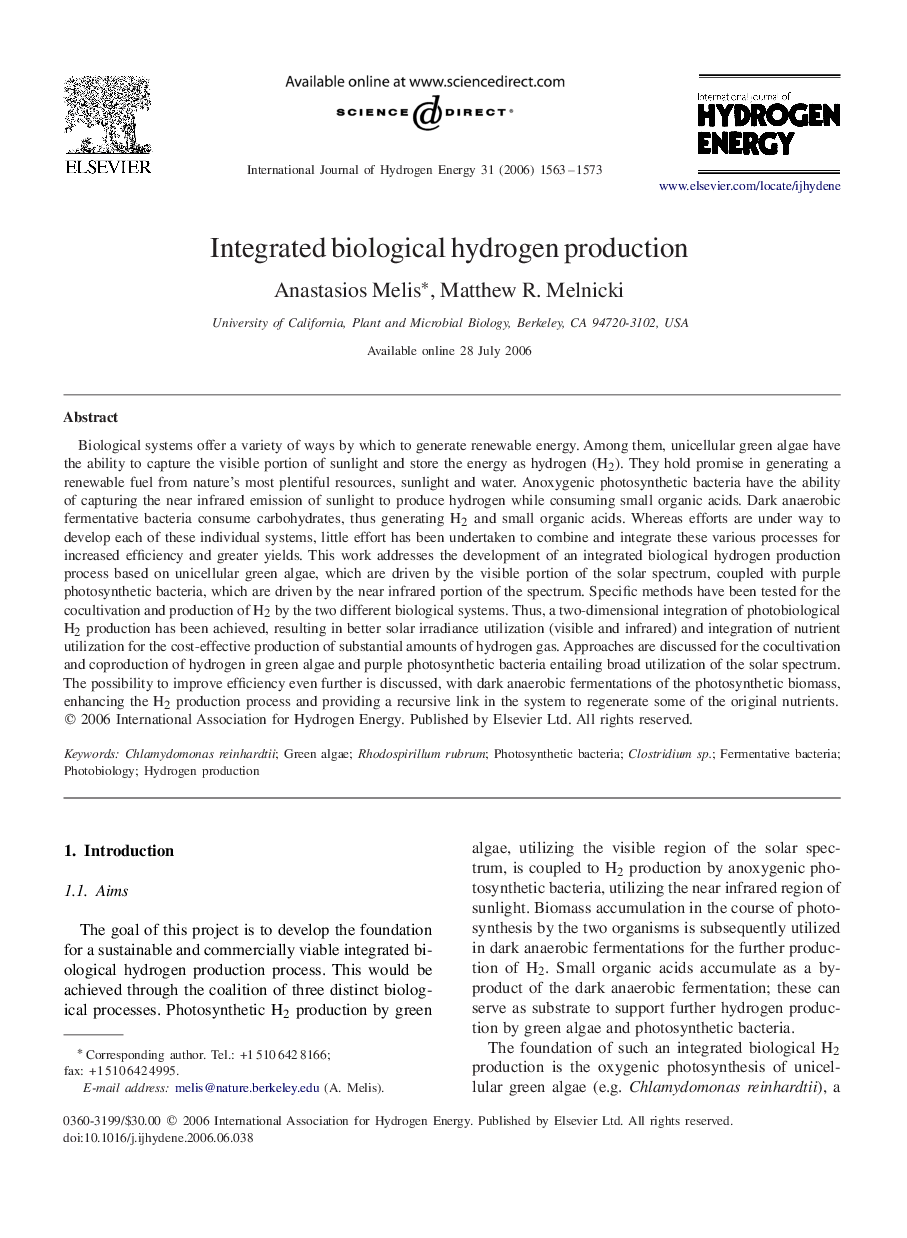| Article ID | Journal | Published Year | Pages | File Type |
|---|---|---|---|---|
| 1282007 | International Journal of Hydrogen Energy | 2006 | 11 Pages |
Biological systems offer a variety of ways by which to generate renewable energy. Among them, unicellular green algae have the ability to capture the visible portion of sunlight and store the energy as hydrogen (H2). They hold promise in generating a renewable fuel from nature's most plentiful resources, sunlight and water. Anoxygenic photosynthetic bacteria have the ability of capturing the near infrared emission of sunlight to produce hydrogen while consuming small organic acids. Dark anaerobic fermentative bacteria consume carbohydrates, thus generating H2 and small organic acids. Whereas efforts are under way to develop each of these individual systems, little effort has been undertaken to combine and integrate these various processes for increased efficiency and greater yields. This work addresses the development of an integrated biological hydrogen production process based on unicellular green algae, which are driven by the visible portion of the solar spectrum, coupled with purple photosynthetic bacteria, which are driven by the near infrared portion of the spectrum. Specific methods have been tested for the cocultivation and production of H2 by the two different biological systems. Thus, a two-dimensional integration of photobiological H2 production has been achieved, resulting in better solar irradiance utilization (visible and infrared) and integration of nutrient utilization for the cost-effective production of substantial amounts of hydrogen gas. Approaches are discussed for the cocultivation and coproduction of hydrogen in green algae and purple photosynthetic bacteria entailing broad utilization of the solar spectrum. The possibility to improve efficiency even further is discussed, with dark anaerobic fermentations of the photosynthetic biomass, enhancing the H2 production process and providing a recursive link in the system to regenerate some of the original nutrients.
